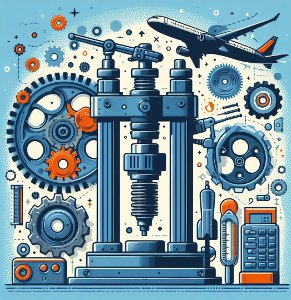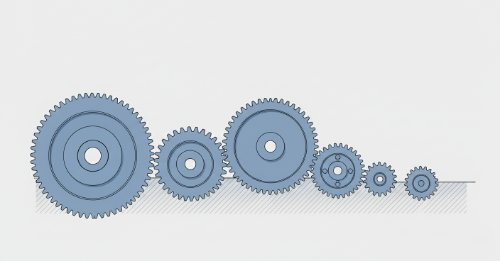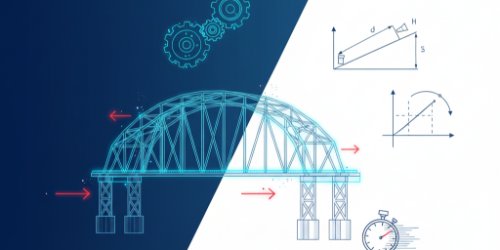Worked examples (12) - Rectilinear Motion (3) | Kinetics of Particles by Newton's Second Law - Engineering Mechanics (Undergraduate Advanced)
SPONSORED Get Personalized Tutoring NowStruggling with a tough concept or looking to advance your skills? Our expert tutors offer one-to-one guidance tailored to your unique needs.
Get instant support, clear explanations, and practical strategies to master even the most challenging subjects. With flexible scheduling and customized learning plans, success is just a session away.
Book your personalized tutoring today and start achieving your academic goals!
Get Personalized Tutoring NowStruggling with a tough concept or looking to advance your skills? Our expert tutors offer one-to-one guidance tailored to your unique needs.
Get instant support, clear explanations, and practical strategies to master even the most challenging subjects. With flexible scheduling and customized learning plans, success is just a session away.
Book your personalized tutoring today and start achieving your academic goals!
Struggling with a tough concept or looking to advance your skills? Our expert tutors offer one-to-one guidance tailored to your unique needs. Get instant support, clear explanations, and practical strategies to master even the most challenging subjects. With flexible scheduling and customized learning plans, success is just a session away. Book your personalized tutoring today and start achieving your academic goals!
 Kinetics of Particles by Newton's Second Law - Engineering Mechanics (Undergraduate Advanced)This course will equip you with the skills and knowledge to tackle various engineering and scientific problems involving kinetics of particles, which is the branch of mechanics that deals with the relation between the forces acting on a particle and its resulting motion. From the basics of mechanics, dynamics, and kinetics to getting comfortable with Newton's second law and momentum methods, you will clearly understand how forces cause motion.
Boost your problem-solving skills and open up new career opportunities in fields like aerospace engineering, mechanical engineering, civil engineering, biomedical engineering, physics, chemistry, and more. Imagine being able to predict how a ball flies through the air, or understanding why a car behaves the way it does in a crash. This course helps you do these and many more!
By the end of this course, you will be able to:
- Explain the fundamentals of mechanics, dynamics, and kinetics
- Use Newton's second law to analyze how forces make bodies speed up or slow down
- Learn about energy, how forces do work, and how these relate to motion of bodies
- Figure out how collisions work and what motion happens before and after collisions
This course is designed for students, engineers, scientists, and anyone who is interested in learning the basics of kinetics of particles. The course assumes that you have a basic background in calculus, physics, vector algebra, and statics.
Once enrolled, you have access to dynamic video lessons, interactive quizzes, and live chat support for an immersive learning experience. You engage with clear video explanations, test your understanding with instant-feedback quizzes and interact with our expert instructor and peers in the chat room. Join a supportive learning community to exchange ideas, ask questions, and collaborate with peers as you master the material, by enrolling right away.
Kinetics of Particles by Newton's Second Law - Engineering Mechanics (Undergraduate Advanced)This course will equip you with the skills and knowledge to tackle various engineering and scientific problems involving kinetics of particles, which is the branch of mechanics that deals with the relation between the forces acting on a particle and its resulting motion. From the basics of mechanics, dynamics, and kinetics to getting comfortable with Newton's second law and momentum methods, you will clearly understand how forces cause motion.
Boost your problem-solving skills and open up new career opportunities in fields like aerospace engineering, mechanical engineering, civil engineering, biomedical engineering, physics, chemistry, and more. Imagine being able to predict how a ball flies through the air, or understanding why a car behaves the way it does in a crash. This course helps you do these and many more!
By the end of this course, you will be able to:
- Explain the fundamentals of mechanics, dynamics, and kinetics
- Use Newton's second law to analyze how forces make bodies speed up or slow down
- Learn about energy, how forces do work, and how these relate to motion of bodies
- Figure out how collisions work and what motion happens before and after collisions
This course is designed for students, engineers, scientists, and anyone who is interested in learning the basics of kinetics of particles. The course assumes that you have a basic background in calculus, physics, vector algebra, and statics.
Once enrolled, you have access to dynamic video lessons, interactive quizzes, and live chat support for an immersive learning experience. You engage with clear video explanations, test your understanding with instant-feedback quizzes and interact with our expert instructor and peers in the chat room. Join a supportive learning community to exchange ideas, ask questions, and collaborate with peers as you master the material, by enrolling right away.
This course will equip you with the skills and knowledge to tackle various engineering and scientific problems involving kinetics of particles, which is the branch of mechanics that deals with the relation between the forces acting on a particle and its resulting motion. From the basics of mechanics, dynamics, and kinetics to getting comfortable with Newton's second law and momentum methods, you will clearly understand how forces cause motion. Boost your problem-solving skills and open up new career opportunities in fields like aerospace engineering, mechanical engineering, civil engineering, biomedical engineering, physics, chemistry, and more. Imagine being able to predict how a ball flies through the air, or understanding why a car behaves the way it does in a crash. This course helps you do these and many more! By the end of this course, you will be able to: - Explain the fundamentals of mechanics, dynamics, and kinetics - Use Newton's second law to analyze how forces make bodies speed up or slow down - Learn about energy, how forces do work, and how these relate to motion of bodies - Figure out how collisions work and what motion happens before and after collisions This course is designed for students, engineers, scientists, and anyone who is interested in learning the basics of kinetics of particles. The course assumes that you have a basic background in calculus, physics, vector algebra, and statics. Once enrolled, you have access to dynamic video lessons, interactive quizzes, and live chat support for an immersive learning experience. You engage with clear video explanations, test your understanding with instant-feedback quizzes and interact with our expert instructor and peers in the chat room. Join a supportive learning community to exchange ideas, ask questions, and collaborate with peers as you master the material, by enrolling right away.
 MEE 206: Engineering Mechanics - DynamicsMaster the principles governing the motion of engineering systems. This learning track provides a complete education in dynamics, systematically building from the kinematics of particles to the kinetics of rigid bodies and culminating in an introduction to dynamic systems and vibration. You will learn to analyse and predict how mechanical systems behave under the influence of forces.
This programme is for undergraduate students in mechanical, aerospace, civil, or related engineering disciplines. It is also essential for practising engineers and applied scientists who require a rigorous, first-principles command of dynamic analysis for their professional work. A prerequisite knowledge of statics, calculus, and vector algebra is assumed.
Upon completion, you will possess the analytical tools to solve complex dynamics problems for particles and rigid bodies using force, energy, and momentum methods. This provides the essential foundation for advanced study in mechanical design, control systems, and structural analysis, and prepares you for demanding technical roles in the engineering sector.
MEE 206: Engineering Mechanics - DynamicsMaster the principles governing the motion of engineering systems. This learning track provides a complete education in dynamics, systematically building from the kinematics of particles to the kinetics of rigid bodies and culminating in an introduction to dynamic systems and vibration. You will learn to analyse and predict how mechanical systems behave under the influence of forces.
This programme is for undergraduate students in mechanical, aerospace, civil, or related engineering disciplines. It is also essential for practising engineers and applied scientists who require a rigorous, first-principles command of dynamic analysis for their professional work. A prerequisite knowledge of statics, calculus, and vector algebra is assumed.
Upon completion, you will possess the analytical tools to solve complex dynamics problems for particles and rigid bodies using force, energy, and momentum methods. This provides the essential foundation for advanced study in mechanical design, control systems, and structural analysis, and prepares you for demanding technical roles in the engineering sector.
Master the principles governing the motion of engineering systems. This learning track provides a complete education in dynamics, systematically building from the kinematics of particles to the kinetics of rigid bodies and culminating in an introduction to dynamic systems and vibration. You will learn to analyse and predict how mechanical systems behave under the influence of forces. This programme is for undergraduate students in mechanical, aerospace, civil, or related engineering disciplines. It is also essential for practising engineers and applied scientists who require a rigorous, first-principles command of dynamic analysis for their professional work. A prerequisite knowledge of statics, calculus, and vector algebra is assumed. Upon completion, you will possess the analytical tools to solve complex dynamics problems for particles and rigid bodies using force, energy, and momentum methods. This provides the essential foundation for advanced study in mechanical design, control systems, and structural analysis, and prepares you for demanding technical roles in the engineering sector.
 GET 207: Applied MechanicsMaster the non-negotiable principles of Engineering Mechanics. This track delivers a rigorous, complete programme in statics and dynamics, built to the NUC GET 207 core curriculum. It moves methodically from force systems and equilibrium to the kinematics of rigid bodies and the kinetics of particles. This is the foundation of all structural and mechanical analysis.
This programme is for first and second-year undergraduate engineering students. It is an essential requirement for students in Mechanical, Civil, Structural, Aerospace, and Mechatronics engineering. A working knowledge of introductory physics and calculus is assumed.
On completion, you will be able to analyse and solve complex problems in statics and particle dynamics. You will draw free-body diagrams, apply equilibrium equations, analyse trusses and frames, and solve motion problems using Newton's laws, work-energy, and momentum methods. This programme prepares you for advanced courses, particularly Mechanics of Materials, and future professional engineering practice.
GET 207: Applied MechanicsMaster the non-negotiable principles of Engineering Mechanics. This track delivers a rigorous, complete programme in statics and dynamics, built to the NUC GET 207 core curriculum. It moves methodically from force systems and equilibrium to the kinematics of rigid bodies and the kinetics of particles. This is the foundation of all structural and mechanical analysis.
This programme is for first and second-year undergraduate engineering students. It is an essential requirement for students in Mechanical, Civil, Structural, Aerospace, and Mechatronics engineering. A working knowledge of introductory physics and calculus is assumed.
On completion, you will be able to analyse and solve complex problems in statics and particle dynamics. You will draw free-body diagrams, apply equilibrium equations, analyse trusses and frames, and solve motion problems using Newton's laws, work-energy, and momentum methods. This programme prepares you for advanced courses, particularly Mechanics of Materials, and future professional engineering practice.
Master the non-negotiable principles of Engineering Mechanics. This track delivers a rigorous, complete programme in statics and dynamics, built to the NUC GET 207 core curriculum. It moves methodically from force systems and equilibrium to the kinematics of rigid bodies and the kinetics of particles. This is the foundation of all structural and mechanical analysis. This programme is for first and second-year undergraduate engineering students. It is an essential requirement for students in Mechanical, Civil, Structural, Aerospace, and Mechatronics engineering. A working knowledge of introductory physics and calculus is assumed. On completion, you will be able to analyse and solve complex problems in statics and particle dynamics. You will draw free-body diagrams, apply equilibrium equations, analyse trusses and frames, and solve motion problems using Newton's laws, work-energy, and momentum methods. This programme prepares you for advanced courses, particularly Mechanics of Materials, and future professional engineering practice.